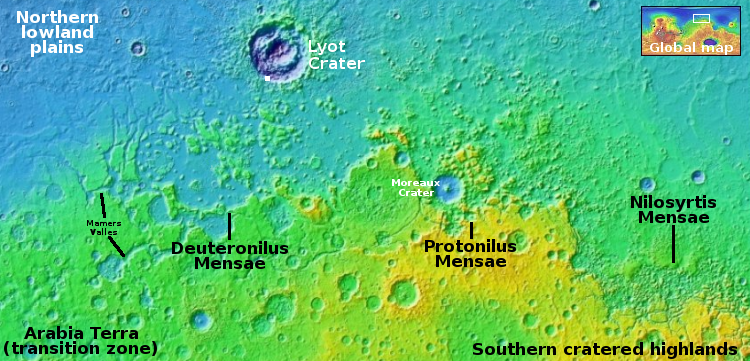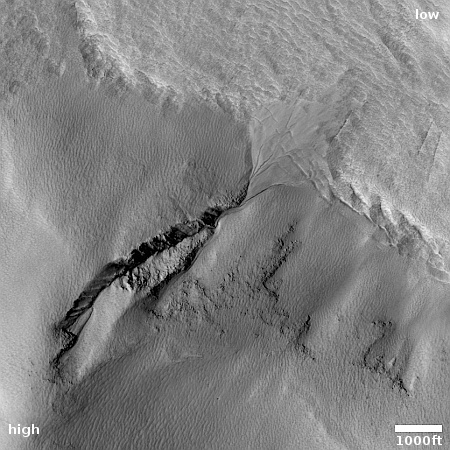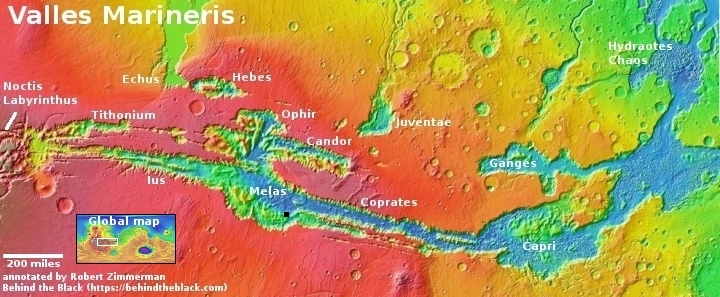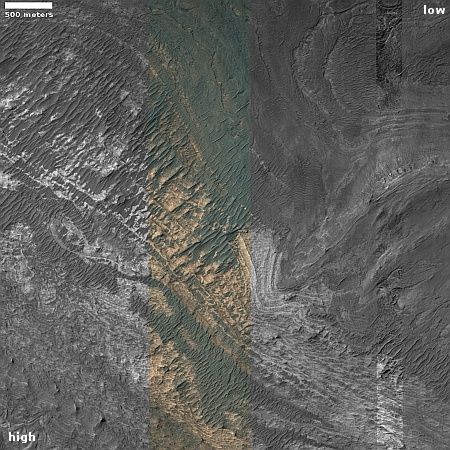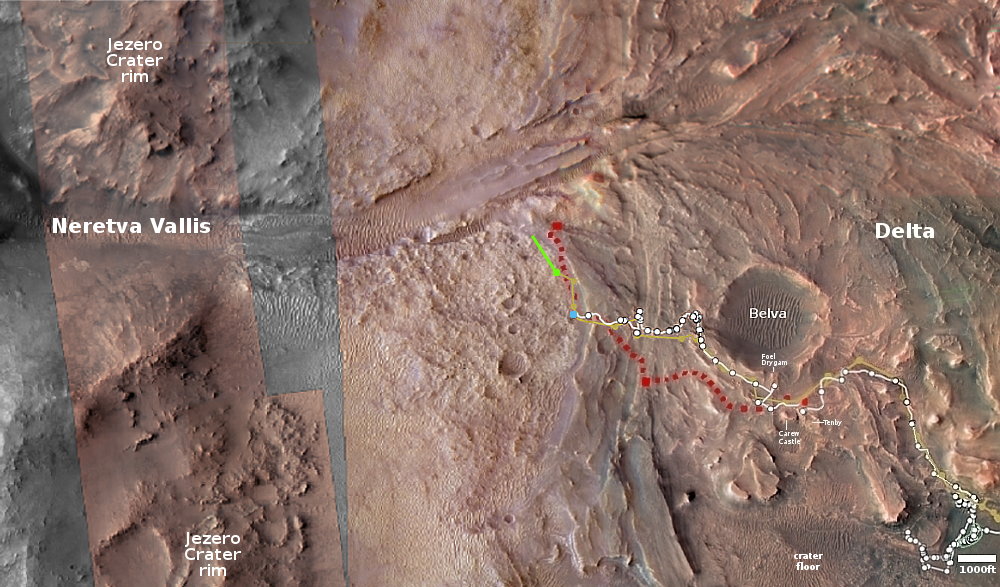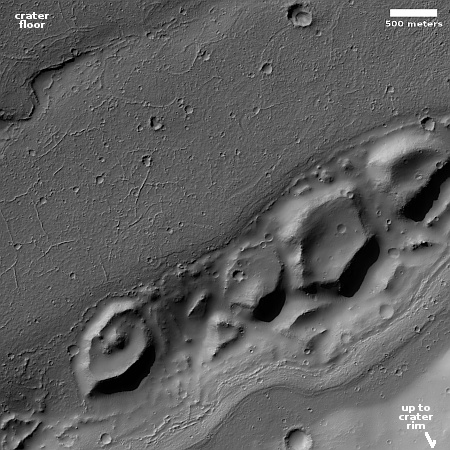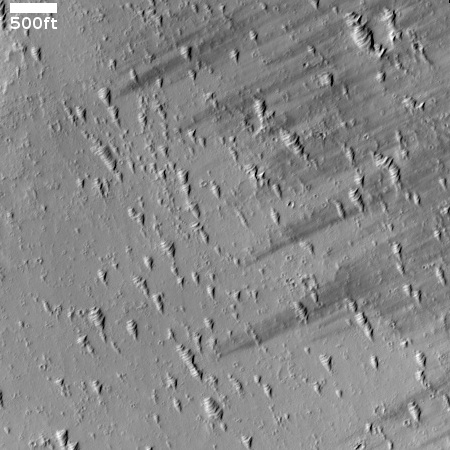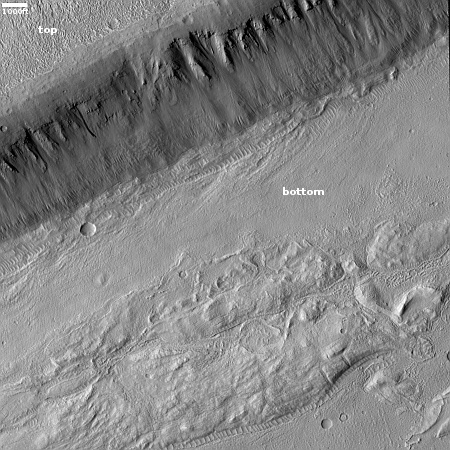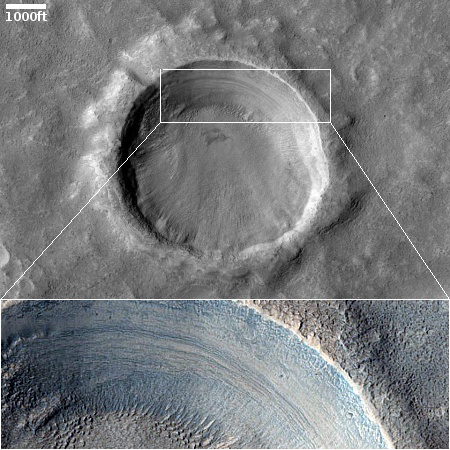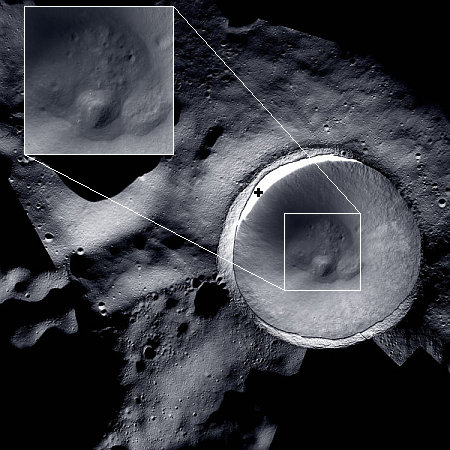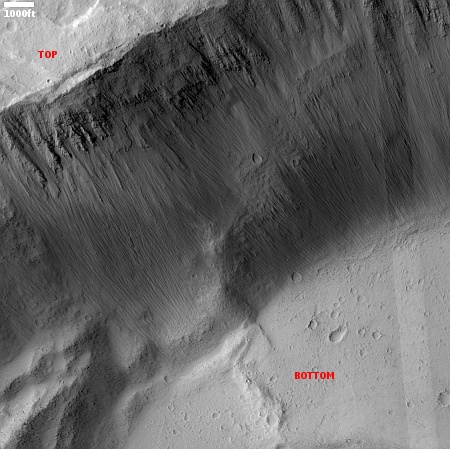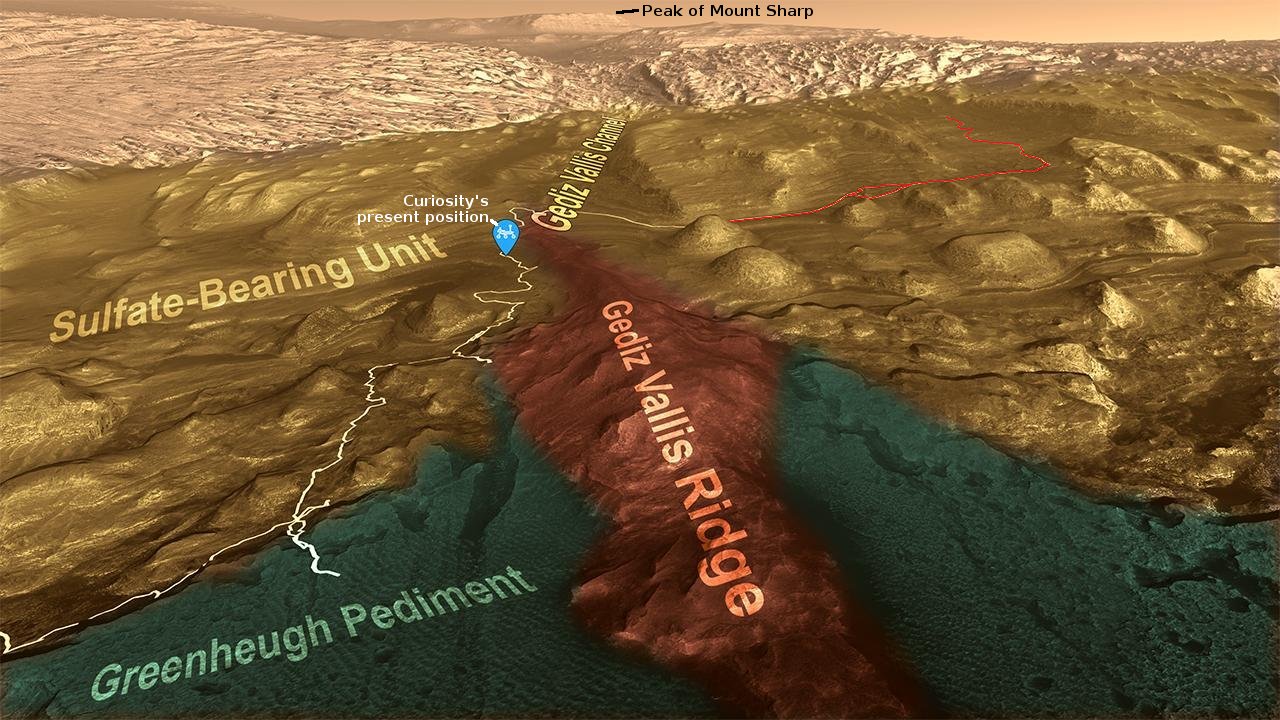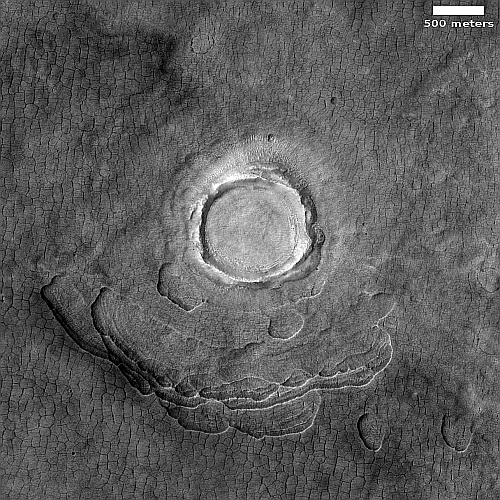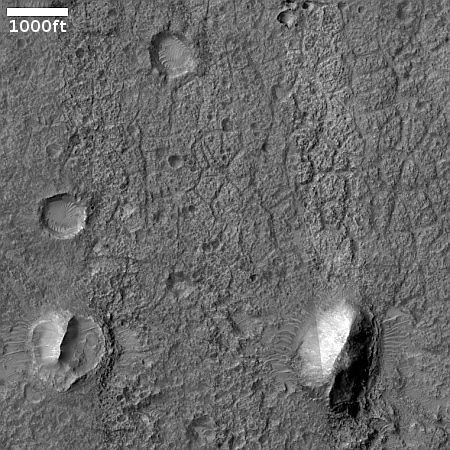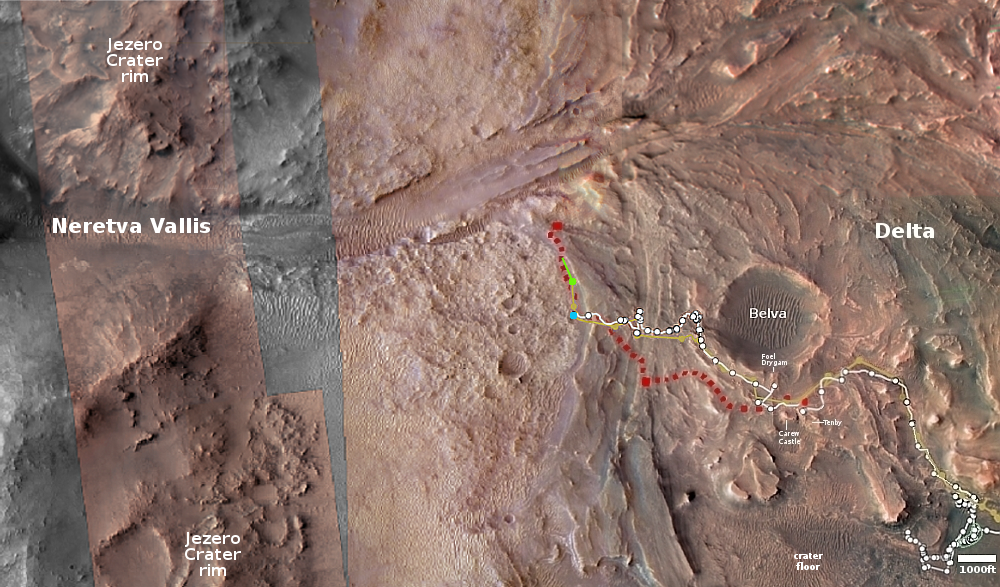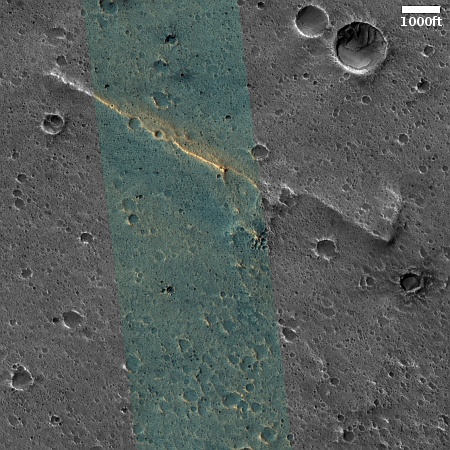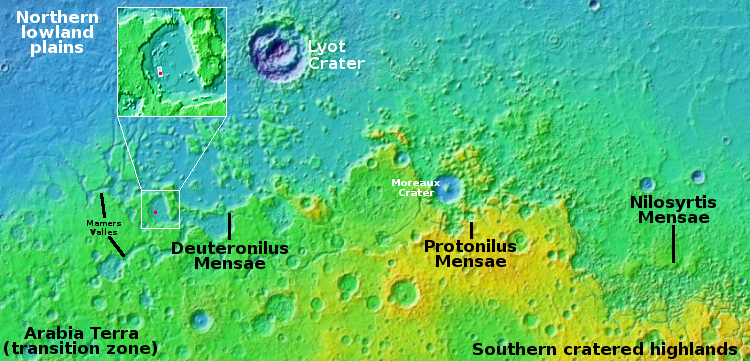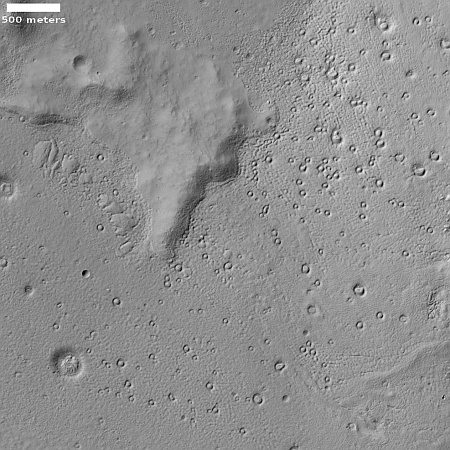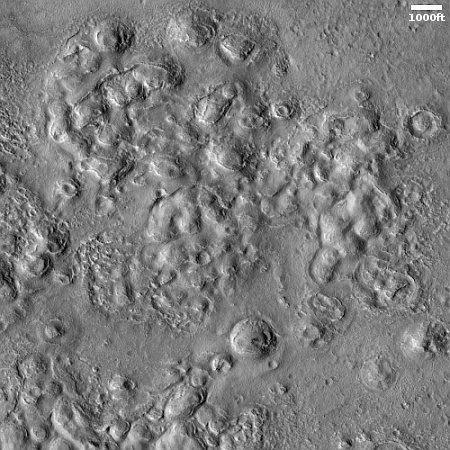Is this the source of the sand for the giant dune sea that surrounds the Martian North Pole?

Circling the north pole of Mars is a gigantic dune field dubbed Olympia Undae, with its densest regions (marked in red on the overview map to the right) estimated to be 700 miles long and covering 120 degrees of longitude.
Where does all the sand come from that created this dune ocean? We now have a rough idea. The arrows on the map to the right indicate the direction of the prevailing winds, as recently determined by scientists studying the orientation of dunes. From this it appears that much of the dust comes from the north polar icecap itself, from its lower layers where dust and ice are cemented together. The prevailing winds, especially in the canyons that cut into the icecap, drive that dust out from the lower layers, where it over eons has piled up in that circular ocean of sand.
The white cross marks the location of today’s cool image, an attempt by scientists to photograph at high resolution one of the sources of this sand, on the edge of the icecap.
» Read more

Circling the north pole of Mars is a gigantic dune field dubbed Olympia Undae, with its densest regions (marked in red on the overview map to the right) estimated to be 700 miles long and covering 120 degrees of longitude.
Where does all the sand come from that created this dune ocean? We now have a rough idea. The arrows on the map to the right indicate the direction of the prevailing winds, as recently determined by scientists studying the orientation of dunes. From this it appears that much of the dust comes from the north polar icecap itself, from its lower layers where dust and ice are cemented together. The prevailing winds, especially in the canyons that cut into the icecap, drive that dust out from the lower layers, where it over eons has piled up in that circular ocean of sand.
The white cross marks the location of today’s cool image, an attempt by scientists to photograph at high resolution one of the sources of this sand, on the edge of the icecap.
» Read more

